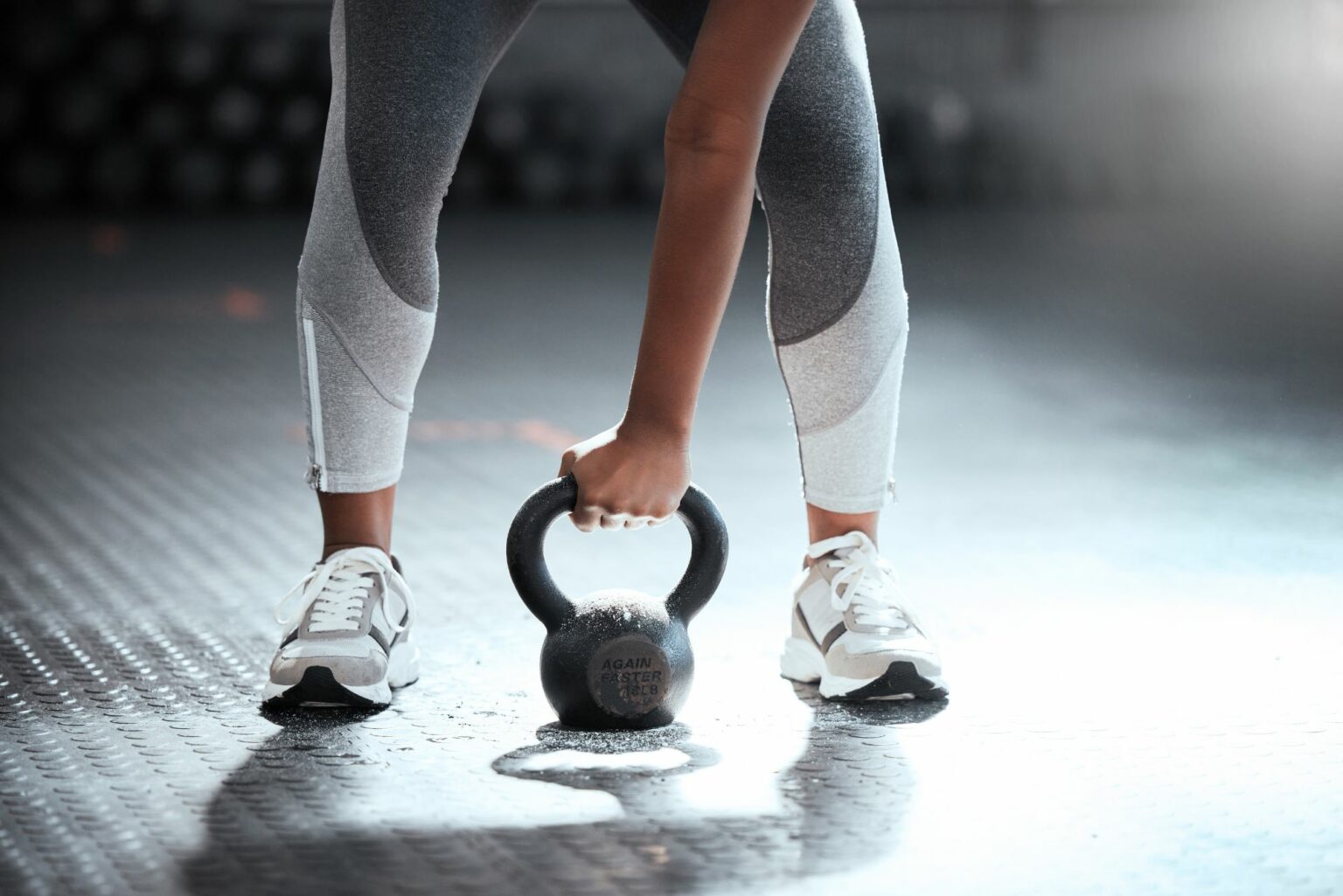


Kettlebells, a popular type of weight training equipment originating from Russia, consist of a cast iron ball with a handle attached to the top, and are available in various weights and sizes.
For runners, incorporating kettlebell workouts into their training can yield numerous benefits such as cardiovascular fitness. Kettlebell workouts for runners focus on functional movements that simulate those used while running, making them an excellent addition to a runner’s strength and conditioning routine.
A must-have piece of equipment for every runner’s home gym is kettlebells. These unique tools not only require minimal space, but also provide a wide range of exercise variety to enhance strength, power, and cardiovascular capacity. Therefore, kettlebell exercises should be a key component of your strength training, as they offer a competitive advantage in your running performance.
Jack Winyard, a certified Senior MSK Physiotherapist and Founder at Winchester Physio and Health recommends kettlebells as an exceptional tool for an intense leg workout, which also engages the core significantly. Strengthening the quads, hamstrings, and glutes, as research suggests, not only improves running performance but also safeguards against injuries. These lower-body powerhouse muscles are crucial for runners.
A kettlebell workout for runners is known for being a high-intensity, full-body workout that primarily targets the core, glutes, hamstrings, and back muscles. These areas are crucial for runners as they help with stability, balance, and injury prevention. By strengthening these muscle groups, runners can improve their running form and efficiency.
Moreover, studies have shown that kettlebell exercises improve cardiovascular capacity and endurance. This is due to the high-intensity nature of these workouts, which involves performing explosive and dynamic movements. These movements mimic those used in running, making them functional and highly beneficial for runners.
In addition to physical benefits, incorporating kettlebell workouts into a training routine can also have mental benefits. The high-intensity nature of these workouts can improve mental toughness and focus, which are crucial for long-distance running.
In addition to strengthening exercises, a kettlebell sport workout for runners can also be used for mobility and flexibility training. Runners often struggle with tightness and imbalances in their muscles, which can lead to injuries. Kettlebell exercises such as windmills and Turkish get-ups can help improve flexibility, mobility, and stability.
When searching for the ideal kettlebells for runners, it is crucial to consider the weight and size of the kettlebell. It is advisable to begin your kettlebell training with a lighter weight and gradually increase it as strength and proficiency improve.
Typically, women can start with kettlebells weighing between 18 and 26 pounds (8-12 kilograms), while men can aim for a range of 35 to 44 pounds (15-20 kilograms). However, these are just averages, and the weight selection depends on your fitness level, experience with kettlebells and other weights, as well as your personal comfort. It is important to select a weight that challenges you while still allowing for proper form and technique.
Another aspect to take into account is the handle of the kettlebell. It should provide a comfortable grip, preferably with a smooth surface, to avoid blisters or calluses.
We recommend browsing through the range of kettlebells available at Decathlon.
As with any workout routine, if any exercises feel uncomfortable or cause pain, it is important to cease performing them and seek guidance from an expert.
Jack Winyard, Senior MSK Physiotherapist and Clinic Manager at Winchester Physio and Health, has personally selected and demonstrates the exercises below to provide a comprehensive whole-body kettlebell workout. This kettlebell training workout incorporates both push and pull exercises for the upper body, which is crucial for optimal running form. Maintaining a strong back, core muscles, and full shoulder mobility is paramount, as slouched shoulders can negatively impact your arm swing, hips, and feet, leading to over-striding. Kettlebell workouts can enhance your running efficiency and prevent common pitfalls.
This routine, which takes approximately 20-30 minutes and can be done 1-2 times a week, combines endurance, power, and pure strength training. By following this regimen, you can potentially experience a 5% improvement in running economy and a significant 60% reduction in the risk of injury each week. All of this can be achieved in less than an hour of your time each week! Let’s dive into the first exercise: the kettlebell side lunge.
This exercise targets the glutes, hamstrings, and quads while also engaging the core for stability. The lateral movement mimics that of running, making it a functional and beneficial exercise for runners.
The squat is a fundamental movement for runners as it strengthens the quads, upper leg, hamstrings, and glutes, which are crucial for stability and injury prevention. Adding a kettlebell to this exercise increases resistance and intensity.
This goblet squat exercise targets the same muscle groups as the previous squat, but with a slightly different stance and grip.
This exercise adds an extra challenge to the regular lunge by incorporating two kettlebells and focusing on single-leg strength and stability.
This kettlebell press exercise targets the shoulders, chest, and triceps while also engaging the core for stability.
This single-leg deadlift exercise is great for targeting the hamstrings and glutes while also improving balance and stability.
This explosive movement targets the glutes, hamstrings, and core while also improving cardio endurance.

There are various types of kettlebell swings that can be incorporated into your routine depending on your particular goals. For example, a two-handed swing is great for overall conditioning and building endurance, while a one-arm swing targets the obliques and core stability. A high-rep ballistic swing can also be beneficial for increasing explosive power in the hips and improving running speed. With so many variations to choose from, you can easily tailor your kettlebell swing routine to fit your specific needs and fitness goals.
This exercise targets the lower abs, legs and hip flexors while also improving stability in the core.
This exercise combines a lower body squat with an upper body row, targeting the quads, glutes, and upper back muscles.
This exercise adds an extra challenge to the traditional plank by incorporating a rowing motion with one arm while also engaging the core for stability.
This exercise targets the triceps and can be done with one or two kettlebells.
This exercise challenges the lower body and core while also working on balance and coordination.
This exercise targets weak glutes and hamstrings while also engaging the core for stability.
Incorporating kettlebell training for runners into your routine can help improve overall strength and stability, which in turn can prevent injuries while increasing running mileage. By targeting key muscle groups and building endurance, kettlebell workouts can complement a running training plan and create a well-rounded fitness regimen. It’s important to listen to your body and gradually increase the intensity of your workouts, but with proper form and consistency, kettlebell exercises can provide significant benefits for runners. Remember to warm up properly before each workout and consult a professional if you experience any pain or discomfort while performing these exercises.
In conclusion, kettlebell exercises offer a wide range of benefits for runners, from improving overall strength and stability to targeting specific muscle groups and enhancing explosive power. By integrating these best kettlebell exercises recommended by Jack Winyard, Senior MSK Physiotherapist and Founder at Winchester Physio and Health, into your routine, you can elevate your running performance, core strength and safeguard against injuries in the long term. Remember to always prioritise proper form and gradually increase the intensity of your workouts for maximum results. With consistency and dedication, kettlebell training can take your running to the next level.
So why not pick up some kettlebells from Decathlon today and start incorporating these exercises into your routine today? Happy lifting!
Ready for a speedy marathon challenge? Take a read of our 4 hour pace marathon blog.
Note: This document does not provide medical advice and is for informational purposes only. Consult a healthcare professional before starting any new exercise program.
Join our mailing list to stay up to date with the latest UK running events, training tips, and exclusive offers on running products. Rest assured, we value your privacy and would never dream of selling your address. Sign up now…
Share this article
When it comes to running, many people often ask: “How long does it take to...
Did you know that the world record for completing a half marathon is 57 minutes...
AI coaching is transforming the way runners train, offering personalised plans and real-time feedback through...
Elevation gain refers to the total cumulative vertical distance ascended during a sport activity, such...
As runners over 40, we often focus on mileage, speed, and endurance. But there’s a...
A heart rate zone calculator for runners is vital for optimising your training intensity. It...
We’re here to make sure you’re up-to-date with the latest running tips, events and product discounts – we’ve always got your back! Rest assured, we value your privacy and would never dream of selling your address.
BONUS: Sign up today and receive a FREE code for our Sub-4-Hour Marathon Plan